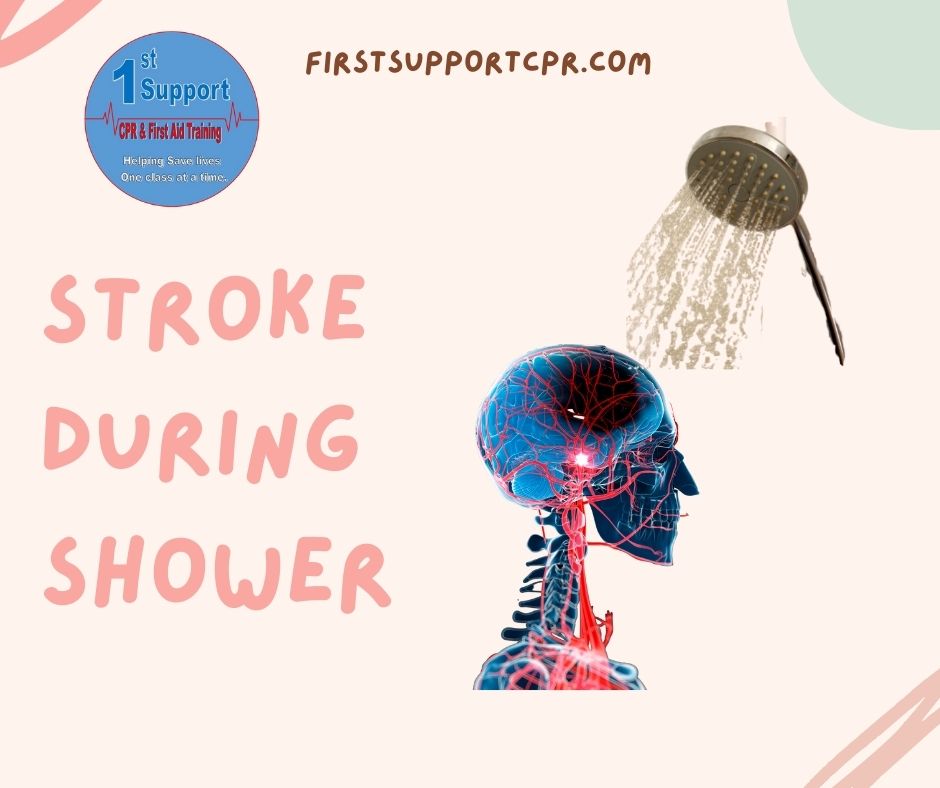
Before moving ahead; we must understand the basic difference between these events;
Heart Attack: It occurs when blood flow to the heart is blocked. It is a circulatory problem. A heart attack could be due to blockage of an artery that supplies blood to an area of your heart.
Cardiac Arrest: It occurs when the heart malfunctions and stops beating unexpectedly. It is an electrical problem causing the irregular heartbeat. This prevents the heart from pumping the blood to the other parts of the body including the brain. As the muscles won’t expand and contract, the blood won’t flow.
These two conditions are linked. A sudden cardiac arrest can happen after a heart attack.
Stroke: When blood flows to an area of the brain cut-off. Hence, brain cells deprived of the oxygen and glucose needed to survive.
Why do they happen in the bathroom often?
The study has shown that there is a rapid increase in bathing death accidents. It is mentioned that the causes of death while bathing is primarily cardiovascular diseases followed by cerebrovascular and respiratory diseases.
Toilet Strain
Heart attacks which occur during defecation are, in many cases, the result of using the (unnatural) sitting posture for waste elimination. Excessive strain during defecation adversely affects the cardiovascular system. Results in syncope or death. Syncope is a temporary loss of consciousness usually related to insufficient blood flow to the heart. Straining on the stool may reduce your blood pressure. This leads to an insufficient supply of blood to the heart.
Use of a sitting toilet triggers the risk more than a squatting toilet as it requires more strain. It may trigger cardiac arrest in the bathroom often.
Abrupt changes in Blood pressure
For high blood pressure people, sequenced bathing, the temperature of water and season should be on the count, as mentioned above. Sudden cold water exposure increases sympathetic tone which further causing a rapid fall in skin temperature. It leads to rising blood pressure.
Early to rise!
Morning may be the most dangerous time of the day for older people with high blood pressure. Usually, we use the toilet and take a bath in the morning. The onset of events are more in late mornings from 8 am to 11 am, study says.
Bathing is suspected of causing abrupt changes in blood pressure that induce ischemia in the cerebral blood vessels. This could drive a stroke or heart attack or a cardiac arrest in the bathroom or toilet.
A person with a history of high blood pressure or myocardial infarction must be careful about bathing. The difference in temperature in the bathtub and body could cause abrupt changes in blood pressure.
No sequenced bath or shower
“While bathing or showering, do not wet the head and hair first. This is the wrong sequence.” Writes a professor at UiTM National Sports Board. We tend to take bath by letting go shower or bucket water on our head directly. It causes the body to adjust its temperature too quickly because we are warm-blooded. It may generate pressure and cause artery or capillary breakage.
Sequenced bathing is very important to avoid such incidences. Start with wetting your legs and up to your head gently. Frequently, incidences of stroke or heart attack or cardiac arrest in the bathroom happen more in winter than in summer. Water temperature matters a lot while bathing.
In the nutshell
Events like stroke/Heart Attack/Cardiac arrest can happen to anybody anywhere at any time. It’s good that everyone is familiar with the signs of heart attack, stroke and cardiac arrest and act on time when such a situation occur. Most importantly a right lifestyle is the best way to stay away from a heart attack and stroke!
